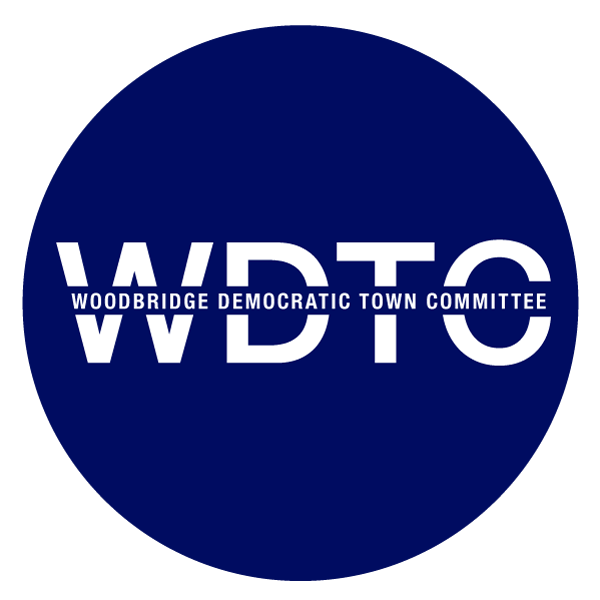
Woodbridge Earth Day
From Local to Global, Democrats Lead on Sustainability and Climate Action
Local Leadership
Woodbridge has an impressive history of environmental stewardship and local action to reduce green house gas emissions. Here are some examples:
Shortly after the Massaro Family deeded their farm to the Town in 2007, the Town agreed to the use of the property by the newly created Massaro Community Farm, for organic farming;
EV chargers were installed in key town center areas;
A 2.2MW Microgrid was installed in Town, paid for with grant funds;
The Woodbridge Energy Challenge provided one-stop shopping for residents who wanted to learn more about home energy efficiency;
Solar installations abound, including at Amity High School, Beecher Road School, the Teen Center, the Town Library, the JCC and more than 100 Woodbridge homes;
The revitalized Town Ad Hoc Sustainability Committee has already this year continued its Lecture Series with a presentation at the Library on composting and conducted a survey of Town residents with respect to waste diversion and composting; and
This year’s Earth Day event has engaged the entire community in recognizing the urgent call for environmental action.
State Action
Governor Lamont and Former Governor Dan Malloy, as well as Senate and House Democrats, have passed landmark climate and environmental legislation in the last decade that will help reduce carbon emissions and adopt to the climate crisis. A few examples:
Global Warming Solutions Act -- The Global Warming Solutions Act, passed in 2008 is Connecticut’s central climate commitment. It requires the state to reduce its total greenhouse gas emissions to at least 10 percent below 1990 levels by 2020, and to at least 80 percent below 2001 levels by 2050.
Executive Order 21-3 -- On December 16, 2021, Governor Lamont signed Executive Order No. 21-3 which directs State executive branch state agencies to take significant actions within their authority to reduce carbon emissions. Many of these actions implement recommendations of the Governor’s Council on Climate Change (“GC3”) Phase 1 Report issued in January 2021.
The DEEP Climate Resilience Fund provides grants to help Connecticut communities initiate planning and develop projects that will help communities become more resilient to the effects of climate change. The Fund specifically is intended to support climate resilience planning at regional, municipal, and neighborhood-level scales, and to support resilience project scoping and development. This historic state-level investment into climate resilience planning and project development was established by Executive Order 21-3 (EO21-3) in December 2021, pursuant to CGS Sec. 16-243y as amended in Public Act 20-5Sec. 15 and was one of 61 recommendations from the Governor’s Council on Climate Change (GC3) in 2021.
On July 6, 2021, Connecticut Governor Ned Lamont signed into law Public Law 21–115: An Act Concerning Climate Change Adaptation to increase local resilience planning options, legal authorities, and financing for climate adaptation and resilience projects.
The CT Department of Administrative Services recognizes sustainability as a core priority. Here are a few examples of their initiatives:
A building code that adopts the International Energy Conservation Code;
Significant investments in solar installations on state buildings;
Construction of new, net-zero energy buildings;
Ongoing electrification of the state fleet;
Programs to divert food waste away from landfills; and more.
National
Under the Biden-Harris Administration, protecting our earth through climate mitigation has been a top priority. Here are a few goals as to which the World Resource Institute2 has tracked achievement:
Cutting greenhouse gas emissions -- In April 2021, President Biden set a new national goal to reduce emissions by 50% to 52% from 2005 levels by 2030, formalizing it in an updated nationally determined contribution (NDC) under the Paris Agreement. Achieving this goal will be a challenge, but it remains within reach thanks to progress made in 2022.
Climate-smart economic stimulus package -- Congress enacted the Inflation Reduction Act in August 2022, the largest piece of climate legislation in U.S. history. Building on the Infrastructure Investment and Jobs Act (or Bipartisan Infrastructure Law) passed in 2021, the Inflation Reduction Act establishes a comprehensive set of clean energy incentives, mostly through decade-long tax credits for everything from electric vehicles to direct air capture and sequestration of carbon dioxide.
The benefits of both pieces of legislation are being realized across the country. Since the Inflation Reduction Act was adopted, the U.S. has seen a massive surge in clean energy manufacturing projects resulting in billions of dollars of investment and the creation of hundreds of thousands of jobs. Americans can now access consumer tax credits for electric vehicles, energy efficient appliances and clean energy technology. In late 2023, the administration announced draft tax credit guidance for clean hydrogen production to drive decarbonization and accelerate the transition to clean energy, one of the final major provisions of the law that had been awaiting policy action.
Global Leadership
At the UN climate summit (COP28) held at the end of 2023, the Biden administration leveraged US leadership to urge other countries to accelerate global climate leadership. A few highlights:
The Administration announced strong standards to reduce methane emissions from the oil and gas industry and on January 12 , 2024, the EPA proposed rules to implement the methane emissions fee.
President Biden was among the leaders who launched the Global Methane Pledge at the 2021 UN climate summit (COP26). As of December 2023, 155 countries have signed onto the pledge and committed to cut their total methane emissions by at least 30% by 2030.
